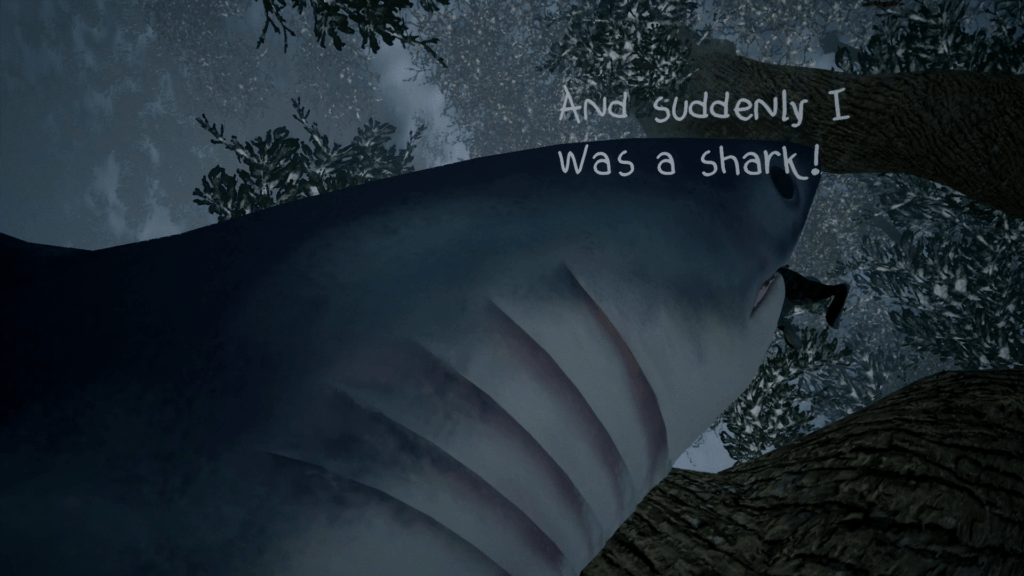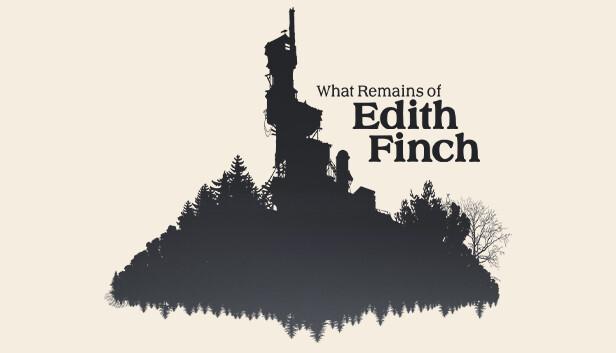This week, I played What Remains of Edith Finch. This has been on my to-play list for a while, so I’m glad I finally got to see why it is so highly recommended. Developed by Giant Sparrow, this game has been released for iOS, PlayStation, Windows, and Xbox, and I played it on my computer.
This walking simulation game follows a diary entry of Edith Finch, as she writes of returning to her family home for the first time in years. Each line of her entry appears as visible sentences in the environment, prompting the player to explore the peculiar Finch house. As she (and the player) do so, they gain access to different characters’ memories to piece together the various tragedies that have befallen the family over multiple generations.
Central Argument
In What Remains of Edith Finch, players must walk in the shoes of Edith Finch and her family members, both literally and metaphorically, to drive the narrative forward.
Analysis
Players must literally walk as different characters to progress the story. Each character offers unique memories and abilities reflective of their personalities, allowing the player to experience the game world differently. External features such as the player’s shadow, height, and hands change. The player also sees the world as the characters do, which includes their daydreams and dissociations. For instance, playing as young Molly guides players to transform into different animals including a cat, owl, shark, and Kraken (just in case you couldn’t tell that the game is set in Washington).
This ability emphasizes Molly’s childlike imagination, giving the player a glimpse into how she views the world. At the same time, the player has to balance Molly’s perspective with the player’s understanding of the world. Shortly before the transformation sequence, the player (as Molly) learns that she ate poisonous holly berries after she went to bed hungry. Molly processes her real-life hunger through her imagination. The player is left to grapple with the greater meaning of Molly’s imagination, speculating that as it becomes more intense and threatening, it may reflect Molly’s subconscious knowledge that something is wrong with her body as she approaches death.

Players must also figuratively walk as different characters, understanding their motivations and personalities, to progress the narrative. For example, in the case of Calvin Finch, players must know that Calvin Finch is determined to prove his brother wrong by swinging all the way around the beam. Once they gain this understanding, supported by a letter written by Calvin’s brother, Sam, players enact this behavior and drive the story forward. When the player becomes Calvin Finch, they are limited to simply swinging Calvin’s legs forward and backward to move the swing he sits on. This, in addition to hearing Calvin’s mother call for him, immerses the player in Calvin’s experience. At the same time, Sam’s letter forcibly reminds the player of Calvin’s impending death. The player knows that the past can’t be changed and that Calvin has to die. However, because players are granted some small control over Calvin’s actions, they feel they have the power to overcome the narrative. This feeling is contrasted by Sam’s letter, which continuously describes Calvin as someone who has made up his mind and is certain of everything he does. The player, hearing this, gradually learns to accept Calvin’s fate, and fulfill it. These conflicts are common throughout What Remains of Edith Finch, as they force the player to experience conflicting emotional experiences while gaining greater empathy for the characters.

Conclusion
The Salon article mentions that for most walking simulators, “you cannot fail a task in a way that forces you to repeat it, and you cannot die”. In What Remains of Edith Finch, however, you must die to progress the narrative. Even though players know they’re walking into a doomed narrative, they keep walking forward to learn who the character is, and after building that emotional connection, to experience how they died.
What Remains of Edith Finch has become one of my favorite games because of its unique mechanisms and evocative story. If I could make any changes, I would either remove or modify the decision-making mechanics in Lewis Finch’s storyline. Even though I could decide if Lewis wanted to conquer a radiant rainbow or sinister serpents, following the sounds of an electric sitar or silver harp, these decisions had no impact on the rest of the story. Except for the first question that revealed that he’s bisexual, overall the mechanic felt like a gimmick because it didn’t meaningfully increase my understanding of the character.




